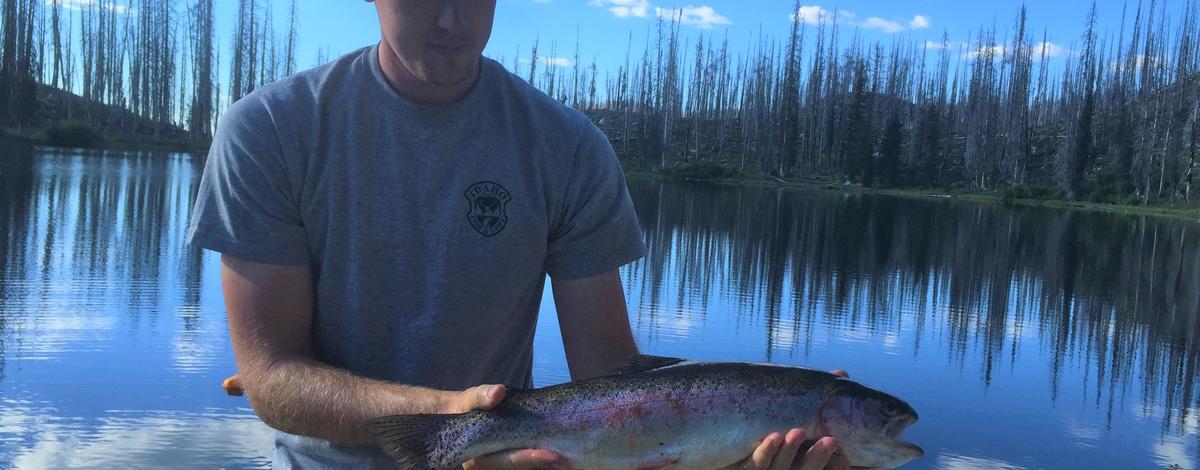When summer temperatures rise, many anglers in Idaho look to alpine lakes to escape the heat, get away from summer crowds, see some gorgeous scenery, and catch some trout. While not as popular as the lakes and streams you can drive to, some dedicated anglers are willing to put in the effort to access remote alpine lakes. With over 1,000 alpine lakes containing at least one species of trout, Idaho anglers can scatter far and wide in search of the catch of a lifetime.

Typically, Fish and Game stocks alpine lakes on a three-year rotation (so, lakes receive fish once every three years). Because of the remoteness and difficulty in reaching many lakes, fish are stocked at small sizes, which makes them much easier to transport. Rainbow Trout and cutthroat trout fry are the most commonly stocked fish and are normally stocked at about 1.5 inches in length. Most alpine lakes are stocked by fixed-wing aircraft, which drop the trout fry as the plane flies over the lake. Trout actually survive the drop quite well, and it usually takes 2-3 years for stocked trout fry to reach 10-12 inches in length.
After stocking, IDFG monitors waters periodically by hiking into them and setting gill nets to sample the fish populations. Data are collected on how many fish are present, how fast the fish are growing, and whether the fish that are present are wild or stocked. This process of building fisheries in alpine lakes has worked well in the past and angler satisfaction is typically high.

While this formula has worked well for managing most alpine lake fisheries, biologists are always looking to make improvements. For example, could stocking slightly larger trout in alpine lakes result in better fish survival or better size that would ultimately translate to better fishing? To answer that question, Fish and Game biologists began a new study comparing the success of stocking two sizes of trout. They started stocking 2.5-inch Rainbow Trout in one set of alpine lakes, and 1.5-inch Rainbow Trout in another set of lakes to compare growth and survival of the two groups of fish.

Both groups of fish have their benefits when it comes to contributing to remote fishing opportunities. The larger 2.5-inch trout have more fat reserves, which could help them survive as they learn and adjust to life outside of the hatchery. Stocking fish at a slightly larger size might also mean that fish would be larger when they are caught by anglers, resulting in higher angler satisfaction. However, 1.5-inch fish may survive just as well as the 2.5-inch fish when dropped from an airplane. If there’s no noticeable benefit to stocking larger fish, stocking smaller fish is more efficient and less expensive. The bottom line is to determine whether the cost to stock larger fry will ultimately pay off in better fishing. Fry for this study were first stocked in 2019 and 2020, and biologists will be surveying the lakes in 2022 and 2023. By winter of 2023, we will know which size is the “winner”. Stay tuned for a follow-up article about 18 months from now where we will summarize the results!

